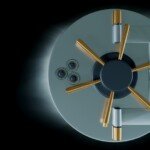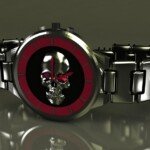Unknown Force: Unveiling the Mystery of CNC Horizontal Drilling (HBM)
In the field of precision manufacturing, the demand for complex machining parts for large equipment continues to soar, and a machine tool is the cornerstone of solving truly challenging workpieces: CNC Level Diamond Factory (HBM). Often covered by multi-axis machining centers (such as multi-axis machining centers), HBM is a quiet giant that can provide excellent accuracy and efficiency on other devices that are too big, too heavy or too complicated. At Greatlight, we focus on using advanced five-axis CNC capabilities to solve complex metal manufacturing challenges, and we believe HBM is an essential asset for specific advanced, large-scale applications.
What exactly is a CNC-level boring mill?
Imagine a machine not only for drilling, but also for drilling, very precise, concentric holes, machining deep cavity, creating precisely positioned features, and performing powerful milling operations on components of small cars of size or larger. This is the essence of HBM. The defined characteristics are Horizontal Oriented Spindle. Unlike the vertical machining center where the spindle moves up and down, the spindle of the HBM extends and retracts horizontally back the workpiece. This basic design offers unique advantages:
- Inherent stability: The horizontal spindle configuration and robust machine base (usually weighing multiple tons) provide excellent stiffness and vibration damping, which is critical for accuracy for large machining.
- Deep abilities: The spindle can travel horizontally over long distances, making internal boredom and machining operations impossible on a vertical machine facing gravity deflection.
- Table configuration: Workpieces are usually mounted on heavy duty flat tables that can move accurately in the X-axis (left/right). The spindle itself moves vertically (y-axis), horizontally, towards/away from working (z-axis). Advanced models add rotation axes (such as B-axis rotation of the spindle head or C-axis rotation of the table), thereby significantly enhancing the flexibility of complex profiles.
Under the hood: key assembly and operation
CNC HBM is a master class for heavy-duty precision engineering:
- Huge frame/bed: Incredibly rigid foundations are formed, thus absorbing vibrations from heavy cutting forces.
- Horizontal spindle assembly: The heart of the machine. Accommodating the interface of the motor and drive system, boring head and large, powerful cutting tools. Precision spindle bearings ensure minimal jump during operation.
- quill: Extend from the hollow cylinder of the spindle head that slides on the Z axis. This is where the tool holder is installed and extends to contact the workpiece. Advanced HBM usage "W axis" Specially used for quill movement.
- Multi-axis motion:
- X-axis: Longitudinal motion of the workpiece table.
- Y-axis: Vertical motion of the entire spindle head assembly.
- Z-axis: The spindle/quill travels away from the workpiece (depth).
- (Optional) B-axis: The rotation/tilt of the spindle head is about the horizontal axis to allow the angle to be processed.
- (Optional) C-axis: The workpiece table rotates around the vertical axis and can be processed in circumferential direction.
- CNC control system: brain. Complex software can interpret CAD/CAM generated tool paths, coordinate all shaft motion, spindle speed, feed rate, tool replacement, coolant flow and real-time monitoring with incredible accuracy and repeatability. Modern CNC systems allow complex interpolation motions using multiple axes simultaneously.
- Tool Changer (ATC): Larger HBMs usually use automatic tool changers that can hold dozens of rods, end mills, drill bits and face mills, allowing for complex operations without manual intervention.
- Labor system: Made with extremely powerful fixtures, vises, corner panels, fixtures and tombstones, designed to securely and firmly securely and without deflection during machining.
Where does HBM glow? Applications and Industry
CNC HBM solves the work that makes the industry heavy and precise. Its capabilities are crucial:
- Power generation and energy: Processing huge turbine shells, Hydropower components, generator bases, valve bodies and nuclear reactor components requires deep, accurate holes and complex internal features.
- Aerospace and Defense: Accurate drilling and shaping of key components of aircraft engines (frames, gearboxes), missile launch tubes, defense platform structures and large landing gear installations.
- Heavy machinery and equipment: Manufacture frames, bases, gearboxes, cylinders, pump housings and structural components for mining equipment, construction machinery, agricultural equipment and industrial news.
- transportation: Process large diesel engine blocks, train gearbox boxes, ship propulsion components and special frame cross-sections.
- Mold and death: Made large molds for plastic injection molding, mold molds, and form molds for automotive and consumer goods processing on large-scale presses.
Why choose CNC HBM processing? Unlock key advantages
- Master size and weight: Unique ability to handle parts weighing thousands of pounds and keep dimensions multimeters while maintaining accuracy.
- Unrivaled accuracy of large parts: Even in hardened materials, incredibly tight tolerances (usually microns) can be achieved in holes, surfaces and positional characteristics, which is crucial for critical applications such as power generation and aerospace.
- Excellent rigidity and material removal: Large-scale structures provide powerful cutting parameters (high feed, speed, cutting depth), which enables faster metal removal and shorter production cycles for large components.
- Deep Hole Professional Knowledge: The horizontal spindle is specially constructed for deep drilling operations, far exceeding the actual limitations of vertical machines.
- Process merge: One setup on a multi-axis HBM can often replace multiple settings and machines – milling, drilling, boredom, threading, orientation, profile – reduces processing, setup time and overall cost while improving functional accuracy.
- Improve flexibility with multi-axis: The CNC controlled axis of rotation (B&C) dramatically increases the complexity of the achievable geometry, often eliminating the need for secondary machining operations.
Select the right partner and feature
Choosing the right CNC HBM machining service provider is critical to the success of complex large-scale projects. This is what really matters:
- Experience with large/complex projects: It is crucial to have proven expertise in fixed design, programming strategies, and process optimization for challenging artifacts.
- Machine Specifications: Match the size, weight, required accuracy and functional complexity of the part with machine’s working envelope, spindle function (HP, speed, torque), shaft configuration (3+2 axis vs. 5 axis simultaneously) and precision specifications.
- Advanced Tools and Workforce: Access to a vast professional drilling library (damp, carbide), large diameter mills, inserts, customizable clamping solutions.
- Comprehensive Services: Find providers that offer end-to-end solutions including part design support, precision machining, a wide range of metrology functions (such as large CMMs) and complete post-treatment (heat treatment, surface treatment, coating).
- Technical expertise and problem solving: Deep metallurgy and processing knowledge to meet material challenges, complex geometry and ensure specification quality.
Work with your precise vision
At Greatlight, we leverage the great capabilities of the advanced CNC horizontal drilling plant and our core five-axis CNC expertise to deliver solutions that are critical to size, weight and complexity. We understand the critical tolerances required for energy infrastructure, aerospace components and industrial machinery. Our investment in high-precision equipment, coupled with strict process controls and a team of experienced machining experts, enables us to address the most demanding large challenges. From the complex internal features of hardened alloys to the complex milling operations of large castings, we provide One-stop manufacturing – Covering processing, heat treatment, precision grinding, painting and assembly – Ensure quality and efficiency from raw materials to finished products.
in conclusion
CNC horizontal drilling plants remain the basic and highly refined pillar of modern large-scale manufacturing. It bridges the gap between pure size and microscopic precision, thus enabling the creation of huge, complex and incredibly precise components that form the backbone of the key industry. While not the solution for each part, its unique features in deep boredom, heavy-duty material removal and handling huge workpieces are irreplaceable. For manufacturers that push the boundaries of scale and accuracy, working with experienced precision machining services such as Greatlight, equipped with advanced HBM technology and comprehensive capabilities to transform complex challenges into manufacturing success stories.
Frequently Asked Questions about CNC Level Boring Factory (FAQ)
Q1: What are the main differences between a horizontal diamond factory (HBM) and a vertical machining center (VMC)?
A1: The key difference is the spindle direction. The HBM has a horizontal spindle that is optimized for deep drilling and machining very large weight sides, where gravity and gaps are factors. VMCs have vertical spindles, which are usually more suitable for smaller mid parts, requiring machining on top surfaces. HBMs are usually larger, heavier, and more rigid.
Q2: Can a CNC-level boring mill perform milling operations and boring?
A2: Absolute. although "Boring" In the name, a modern CNC HBMS equipped with a powerful spindle, an automatic tool changer can perform a lot of operations: milling (face, slot, profile), drilling, digging, tapping, rotation, face, face and contours – especially on complex multi-axis models. They have a high level of use in the size category.
Q3: Why do you need HBM? Is a large VMC or other machine sufficient?
A3: For real huge parts (e.g., turbines, large transmissions), the VMC has no working envelope or rigidity at all. The horizontal spindle allows unparalleled internal features and sidewall access. The stiffness on the HBM is much higher, allowing for heavier use of larger tools without vibration or deflection, maintaining accuracy. Effectively handling deep holes is another area of HBMS Excel.
Q4: What’s there "5 axes" What does HBM’s ability mean?
A4: "5 axes" HBM, the machine can simultaneously move the tool to the workpiece on the workpiece while moving the tool to the five digitally controlled axes. Common configurations involve:
- Linear axis: X, Y, Z, W (Quill)
- Rotating axis: B (spindle head tilt) and/or C (table rotation).
Simultaneous 5-axis motion allows the highly contoured surface to be processed in a single setup, greatly reducing lead time and improving the accuracy of complex geometries.
Question 5: When should I consider outsourcing HBM to a store like Greatlime?
A5: If your project involves: Outsourcing:
- Very large or heavy parts exceed the capacity of your internal machine.
- Components that require deep into boring or complex internal functions.
- It requires very tight parts (usually crucial in aerospace, energy, hydraulics).
- Projects requiring complex multi-axis machining on large structures.
- There is a lack of dedicated HBM equipment or expertise within the interior.
- Critical deadlines require fast throughput and expertise from a specialty store.
Question 6: What materials can HBM process?
A6: HBM is very robust and can process almost any machining material, including:
- Ferrous metal: cast iron, ductile iron, carbon steel, alloy steel, tool steel, stainless steel.
- Non-produced metals: aluminum, bronze, brass, copper alloys.
- High temperature alloys: Inconel, Hastelloy, Titanium (+Professional Settings/Tools).
- Plastics and composites: (less common, but possible).
Q7: Is CNC HBM service expensive?
A7: Operating a large HBM requires a lot of capital investment and expertise, so hourly rates are usually higher than smaller machines. HoweverFor large, complex parts:
- The ability to combine many operations into one or several settings Reduce overall project costs Compared to multiple settings on smaller machines.
- High material clearance speeds up production.
- Reducing processing reduces logistics costs and damage risks.
- Accuracy minimizes waste and rework costs. this value Delivery from a capability and efficiency aspect usually makes it cost-competitive for the right application.
Ready to provide the accuracy and functionality of CNC horizontal drilling technology for your next large project? Contact Greatlight today for expert consultation and manufacturing solutions tailored to your most demanding requirements. Confidently customize high-precision, large parts!

















